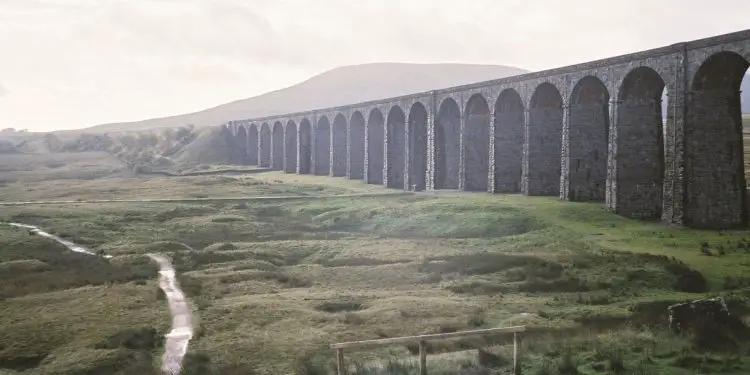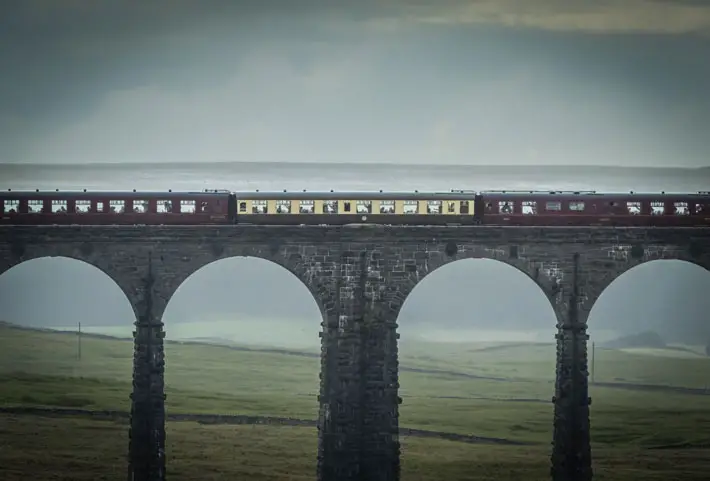A Short History of Ribblehead Viaduct

By Mike Appleton
One of the most mystical places in the Yorkshire Dales is Ribblehead Viaduct, its twenty-four arches supporting the weight of the historic Settle–Carlisle Railway, and a heritage that has been much recorded. The line’s roots stretch back to the 1860s when the East and West Coast Main Lines linked England and Scotland. The Midland Railway had to negotiate terms with their operating rivals if they wanted to move freight or people beyond their boundaries.
That was never as successful as it should have been, so the firm looked at building a route from Settle to Carlisle to avoid the use of other companies. After agreeing a proposed line, the company lobbied Parliament for permission – with success. No sooner was that granted than relations with rival rail companies improved for the better. Midland asked for the decision to be reversed but that was rejected.

“Legacy of its construction”
With no going back, construction began in 1869 and was completed in seven years with around 6,000 men working across the 73-mile route. The line was opened to passengers on 1 May 1876, with freight having been carried for the first time roughly a year previously. In 1968, the service became entirely diesel-operated, but all local stations – apart from Settle and Appleby – closed in 1970. Eleven years later, recommendations were made to close the route to passengers, mainly because of the sheer cost of weatherproofing Ribblehead Viaduct. A project manager was then appointed by British Rail to close the line, but instead, he encouraged passengers to use it more and local stations reopened in 1986. Three years later, the government-backed his approach.
The landscape around Ribblehead is filled with the legacy of its construction. When building began at Ribblehead in 1869, materials for the major architectural projects of the viaduct and Blea Moor Tunnel were manufactured locally and brought onto the site via small steam locomotives on a small tramway. The stone would be transferred from Ingleton by horse. The viaduct’s foundations were sunk some 7 metres down and laid by steam cranes. Before you take the obvious path down to Ribblehead you can see the faint outline of the Batty Green construction camp. Here there were offices and shops, a small town of wooden shacks. A little further down the road, to the right, was a smallpox hospital.

“A fork in the route”
On the main path to the viaduct, you’ll approach a fork in the route and the tramway on the right. Materials would have been housed where the Station Inn is now. At this junction there was a locomotive maintenance shed and an inspection pit so mechanics could get underneath.
The Porter & Co. of Carlisle brickworks are just a little further along the tramway, and at the height of construction around 20,000 bricks a day were being produced there. Brick workers were housed in a shanty town on the moor called Sebastopol – named after the Crimean War siege of 1855 – with Inkerman, Jericho, Jerusalem, and Belgravia nearby.
There were 150 huts between Batty Moss and Dent Head and, according to the 1871 census, they had more than 1,000 men, women and children living in them, many of whom died during the construction due to accidents and smallpox.
Article taken from ‘A-Z of The Yorkshire Dales’ by Mike Appleton, published by Amberley Publishing,
£15.99 paperback









